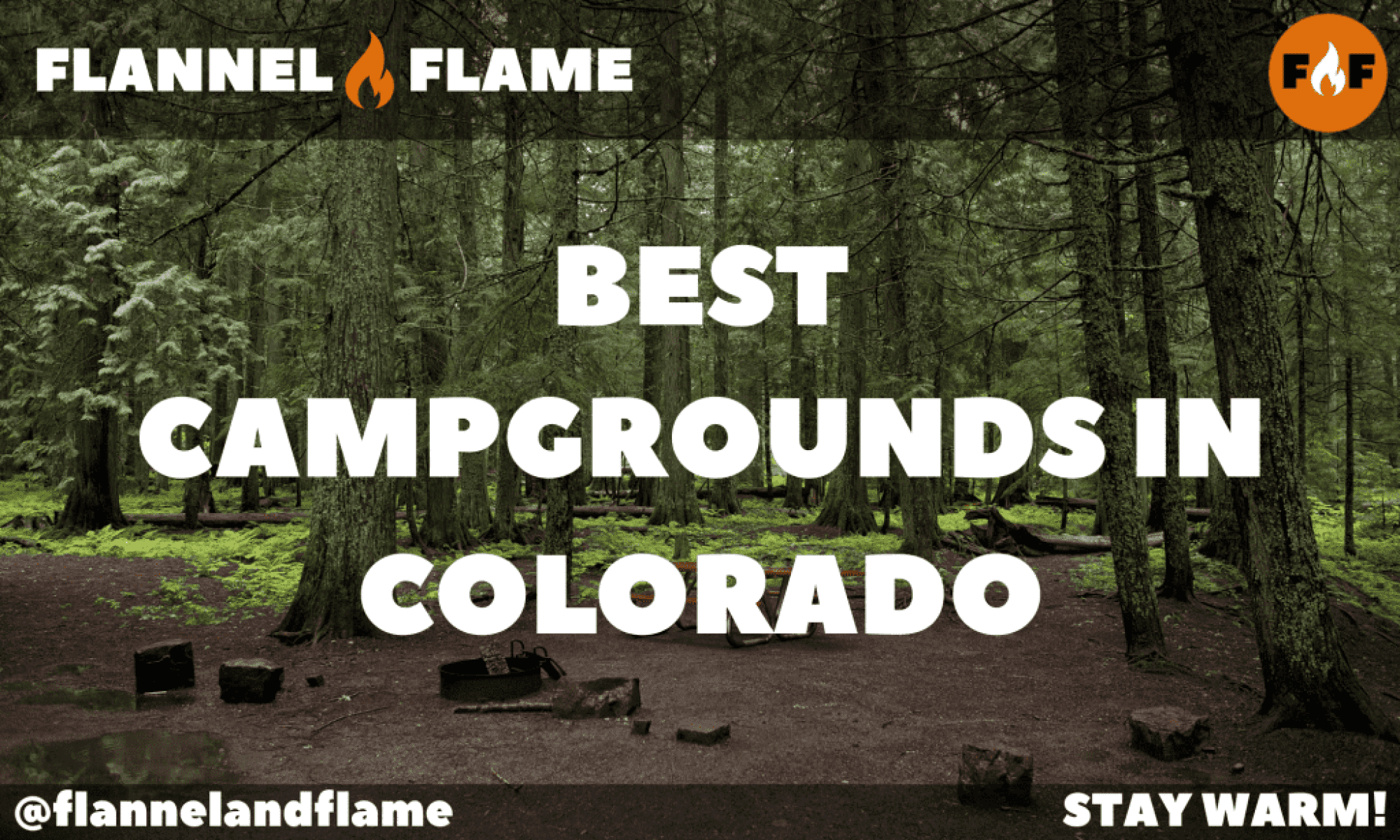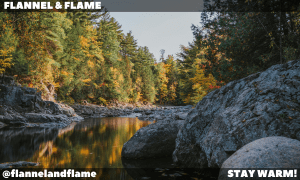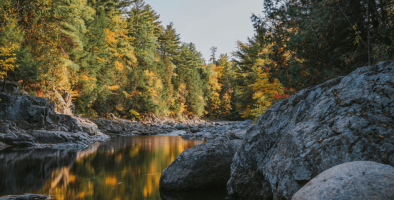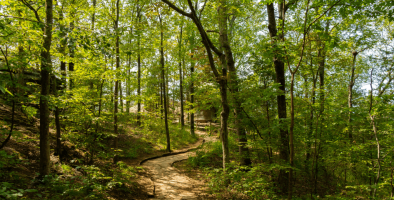Best Campgrounds in Colorado
Colorado, with its dramatic Rocky Mountain landscapes, alpine lakes, and endless vistas, offers some of the most breathtaking camping experiences in North America. From the moment you set up your tent beneath towering pines or park your RV with views of snowcapped peaks, the Centennial State works its magic on your soul. The air seems fresher here, tinged with the scent of wildflowers and pine, while the impossibly blue sky stretches from horizon to horizon. Whether you’re seeking solitude in pristine wilderness or family-friendly amenities with easy access to outdoor adventures, Colorado’s campgrounds deliver experiences that will call you back season after season. Let’s explore some of the most extraordinary places to immerse yourself in Colorado’s natural splendor.
Maroon Bells Scenic Area (Silver Bar, Silver Bell, and Silver Queen Campgrounds)
Number of Campsites: 33 combined
Reservations: Recreation.gov
Address: Maroon Creek Road, Aspen, CO 81611
Perhaps no landscape in Colorado is more photographed than the Maroon Bells – twin 14,000-foot peaks whose symmetrical pyramids are reflected in the still waters of Maroon Lake. The three small campgrounds nestled in this valley offer the rare opportunity to sleep in the shadow of this iconic vista, waking before the day-trippers arrive to experience the magic of alpine morning light transforming the scene.
The campgrounds sit amidst a grove of aspens and conifers in a glacially-carved valley that exemplifies Rocky Mountain grandeur. Sites are rustic and intimate, with the burbling sounds of Maroon Creek providing a soothing backdrop to the imposing silence of the mountains. The air at this 8,000-foot elevation carries an intoxicating mixture of scents – the sweet perfume of alpine wildflowers, the earthy richness of forest floor, and the crystalline purity that seems unique to high mountain environments.
What makes camping here truly extraordinary is the access to some of Colorado’s most stunning wilderness. The dramatic Four Pass Loop trail begins just steps from your tent, offering backpackers a multi-day adventure through landscapes that defy description. For day hikers, the trail to Crater Lake provides an accessible taste of alpine beauty, while the Scenic Loop offers a gentler option with no less impressive views.
Wildlife sightings add to the experience – mule deer often graze in meadows near the campgrounds, while the occasional moose might be spotted wading in marshier areas. Black bears inhabit the surrounding wilderness (necessitating careful food storage), and a variety of birds – from tiny mountain chickadees to impressive golden eagles – animate the landscape with movement and song.
The real magic happens at dawn and dusk. Early risers are rewarded with the first light of day painting the Maroon Bells with a rosy alpenglow that gives them their name, the mountains reflected perfectly in the glassy surface of Maroon Lake before the day’s first breeze ripples the water. As evening approaches, the setting sun creates a similar show in reverse, with long shadows accentuating the dramatic relief of the landscape and campers gathering at the lakeshore to witness nature’s daily masterpiece.
When darkness falls completely, the star show begins. At this elevation, with minimal light pollution, the Milky Way appears as a river of stars flowing between the silhouettes of mountain peaks. The profound silence of the high country adds to the sense of cosmic connection – a reminder of our small place in a vast universe, yet also our integral connection to the natural world.
Great Sand Dunes National Park (Pinon Flats Campground)
Number of Campsites: 88
Reservations: Recreation.gov
Address: 11999 CO-150, Mosca, CO 81146
In a state renowned for its mountains, Great Sand Dunes National Park presents a landscape that seems transported from another continent – North America’s tallest dunes rising improbably against the backdrop of the snow-capped Sangre de Cristo range. Pinon Flats Campground sits at the edge of this otherworldly interface, where forest meets desert in a juxtaposition that challenges expectations and delights the senses.
The campground takes its name from the pinon pines that provide welcome shade for campsites arranged with thoughtful spacing to create pockets of privacy. From your tent or RV, the massive dune field stretches before you – a sea of sand constantly reshaped by wind, its surface etched with rippling patterns and steep faces that create an ever-changing play of light and shadow throughout the day.
What makes this camping experience unique is the diversity of ecosystems within easy reach. A short walk leads to Medano Creek, which flows seasonally along the base of the dunes, creating a beach-like environment where children and adults alike splash in the shallow water and build sand castles that the next day’s flow will reclaim. The creek exhibits a rare phenomenon called “surge flow,” where the water moves in rhythmic pulses like ocean waves – a delightful surprise in this landlocked location.
The dunes themselves invite exploration – though climbing them requires effort, the joy of cresting a ridge to discover the view beyond, or the childlike pleasure of running or sliding down their steep faces, rewards every step. Early morning and late afternoon offer the best times for dune adventures, when the sand is cooler and the low-angle light creates dramatic shadows that reveal the dunes’ complex topography.
Beyond the dunes and creek, trails lead into the foothills of the Sangre de Cristo Mountains, where alpine lakes and forests of aspen and spruce create environments dramatically different from the desert ecosystem below. This remarkable diversity makes it possible to experience seemingly different worlds in a single day – from desert to alpine, from aquatic to forest – each with its own characteristic plants, animals, and sensory experiences.
As night falls, the park reveals another facet of its character. With minimal light pollution, the night sky puts on a spectacular show, with stars appearing to hang just overhead in the clear mountain air. The silhouette of the dune field against this starry backdrop creates a scene of primeval beauty that speaks to something deep in the human psyche – a connection to landscapes that feel both alien and somehow like home.
Rocky Mountain National Park (Moraine Park Campground)
Number of Campsites: 244
Reservations: Recreation.gov
Address: 1895 Fall River Road, Estes Park, CO 80517
Nestled in a broad valley carved by ancient glaciers, Moraine Park Campground offers camping in the heart of Rocky Mountain National Park’s breathtaking landscapes. The campground spreads across a rolling meadow dotted with ponderosa pines and rocky outcroppings, with many sites offering unobstructed views of the surrounding peaks that form a jagged horizon in all directions.
The meadow setting creates an openness unusual for mountain camping, with the expansive views creating a sense of spaciousness while the surrounding peaks provide a comforting embrace. The Big Thompson River winds through the valley floor not far from the campground, its clear, cold waters offering opportunities for fishing or simply sitting streamside to soak in the scenery. Elk frequent the meadows, especially during their fall rut when the males’ bugling calls echo across the valley in one of nature’s most impressive sound displays.
What makes Moraine Park truly extraordinary is its central location within one of America’s most beloved national parks. From your campsite, an extensive network of trails leads to alpine lakes cradled in rocky cirques, through forests of aspen that turn golden in fall, and eventually to the alpine tundra above treeline, where summer wildflowers create carpets of color during their brief growing season. The park’s famous Trail Ridge Road – the highest continuous paved road in the United States – winds its way across the Continental Divide, offering access to landscapes that would otherwise require days of hiking to reach.
Wildlife viewing opportunities abound. Besides the nearly guaranteed elk sightings, lucky campers might spot mule deer, coyotes, and a variety of birds from tiny hummingbirds to impressive hawks and eagles. The more observant might notice yellow-bellied marmots sunning themselves on rocks or American pikas gathering grasses for their winter stores.
The weather here can be dramatically variable, even in summer – from warm sunshine to sudden thunderstorms that roll across the valley with impressive lightning displays before clearing to reveal rainbows arching against the mountainsides. This changeability is part of the Rocky Mountain experience, a reminder of nature’s dynamism and the need for preparedness in mountain environments.
As evening approaches and the day’s adventures conclude, the campground becomes a community of shared experiences. The alpenglow on Longs Peak – the park’s highest summit at 14,259 feet – creates a natural focal point as the mountain seems to glow from within. When darkness falls completely, the stars emerge in such profusion that familiar constellations can be difficult to pick out among the multitude of lights overhead. These evening moments, when the day’s exertions give way to quiet appreciation of natural beauty, create the memories that draw people back to Rocky Mountain National Park year after year.
Black Canyon of the Gunnison National Park (South Rim Campground)
Number of Campsites: 88
Reservations: Recreation.gov
Address: South Rim Drive, Montrose, CO 81401
Some landscapes whisper their beauty; the Black Canyon shouts it. This narrow gorge, where the Gunnison River has carved one of the steepest and most dramatic canyons in North America, creates an almost visceral response in first-time visitors. The South Rim Campground sits just a short walk from this abyss, offering sites nestled among pinyon pines and juniper trees that provide welcome shade and the distinctive fragrance of high desert ecosystems.
The campground itself is relatively simple, but its location makes it extraordinary. A short walk from most sites leads to overlooks where the canyon drops away at your feet – nearly 2,000 feet of sheer black rock descending to the river, which appears as a distant silver thread from this vantage point. The vertiginous views create a mixture of awe and humility, a recognition of natural forces working over vast timeframes to create a landscape that seems both impossible and undeniable.
What makes camping here unique is the sensory experience. During the day, the play of light and shadow on the canyon walls creates an ever-changing gallery of natural art, with sunlight illuminating certain features while leaving others in mysterious darkness. The sound of the unseen river far below reaches up as a distant murmur, more felt than heard. Ravens ride thermals along the canyon walls, their calls echoing across the void in a testament to the acoustics created by the steep rock faces.
Hiking options range from easy rim trails that link various overlooks to extremely challenging inner canyon routes that require technical skills and permits. For most campers, the Rim Rock Trail provides an accessible introduction to the canyon’s features, while the more ambitious Cedar Point Nature Trail offers interpretive information about the unique ecosystem that exists at this elevation.
The night brings its own magic to the Black Canyon. With designation as an International Dark Sky Park, the absence of light pollution allows astronomical features normally invisible to appear in breathtaking clarity. The Milky Way doesn’t just become visible – it dominates the sky with structural details rarely seen near population centers. Meanwhile, the canyon itself becomes a pool of perfect darkness, a void that emphasizes the brilliance of the stars above.
During summer months, park rangers offer evening programs that might include astronomy sessions with telescopes or talks about the canyon’s geology, biology, or human history. These add educational value to the camping experience while building community among visitors united by their appreciation for this remarkable landscape.
Telluride Town Park Campground
Number of Campsites: 30
Reservations: Telluride Parks & Recreation
Address: 500 E Colorado Ave, Telluride, CO 81435
For those who want to combine wilderness proximity with walkable access to one of Colorado’s most charming mountain towns, Telluride Town Park Campground offers a unique proposition. Nestled at the east end of Telluride’s box canyon, this small campground puts you within walking distance of the town’s Victorian-era main street while still providing spectacular mountain views and the soothing sounds of the San Miguel River.
The campground occupies a corner of the town park, with sites arranged in a meadow setting surrounded by aspen groves that turn spectacularly golden in fall. The surrounding peaks create a dramatic backdrop, with Bridal Veil Falls – Colorado’s tallest free-falling waterfall – visible at the head of the canyon. The air carries a mixture of scents – the sweetness of mountain flowers, the earthiness of the nearby river, and occasionally the enticing aromas from restaurants just blocks away.
What makes this camping experience special is the remarkable juxtaposition of wilderness and culture. After a day of hiking the trails that radiate from town into the surrounding mountains, you can walk a few blocks to enjoy fine dining, live music, art galleries, or simply people-watching from a café patio. During Telluride’s renowned festival season, the campground puts you in the heart of events that draw visitors from around the world – from bluegrass and film festivals to yoga gatherings and culinary celebrations.
The San Miguel River runs along the edge of the campground, its rushing waters providing both a pleasant soundtrack and opportunities for fishing or wading on hot summer days. A network of trails begins nearby, including the River Trail that follows the waterway through town and beyond, and more ambitious routes that climb to alpine lakes and mountain passes with sweeping views of the San Juan range.
Though the campground has more amenities than most wilderness sites – including nearby bathrooms with showers and access to the town’s pool and climbing wall – it still provides an authentic outdoor experience. Elk occasionally wander through in early morning or evening, and the night sky, though somewhat affected by town lights, still reveals many stars thanks to Telluride’s remote location and ordinances limiting light pollution.
As evening settles over the canyon, the campground offers a front-row seat to alpenglow on the surrounding peaks, with the last light of day seeming to ignite the mountaintops from within. Later, the sounds of nature – the river’s constant flow, the rustle of aspen leaves in mountain breezes – blend with the distant notes of music from town venues, creating a symphony that represents the unique character of this camping experience where wilderness and civilization coexist in remarkable harmony.
Crested Butte (Oh Be Joyful Campground)
Number of Campsites: 30
Reservations: Recreation.gov
Address: Gothic Road (County Road 317), Crested Butte, CO 81224
In a state filled with scenic wonders, the area around Crested Butte still manages to stand out for its spectacular beauty. Oh Be Joyful Campground sits along the Slate River just outside town, its whimsical name perfectly capturing the feeling of camping in this valley where wildflower-covered meadows stretch toward mountains that seem designed specifically to inspire landscape painters.
The campground occupies a relatively flat area where the Oh Be Joyful Creek joins the Slate River, creating a verdant riparian zone surrounded by sage-covered hills that rise toward dramatic peaks. Sites are thoughtfully arranged to maximize views and privacy, many offering front-porch vistas of Paradise Divide – a jagged ridgeline that lives up to its name, especially when afternoon light plays across its complex topography.
What makes this area truly exceptional is its reputation as the “Wildflower Capital of Colorado.” In mid-summer, the meadows surrounding the campground explode with color – waist-high columbines, lupines, Indian paintbrush, and dozens of other species create natural gardens so vibrant they seem almost artificial. Photographers and artists flock here during peak bloom, when it’s possible to frame mountains beyond carpets of flowers in a scene that epitomizes Rocky Mountain splendor.
The Oh Be Joyful Trail begins near the campground, following its namesake creek through increasingly dramatic terrain to a waterfall and eventually to Blue Lake, cradled in a high basin surrounded by peaks. Other nearby trails offer options for every ability level, from gentle riverside walks to challenging summit attempts that reward hikers with 360-degree views of the Elk Range.
The Slate River provides opportunities for water play right from the campground, with children and adults alike cooling off in swimming holes during warm summer days. Fly fishermen find success in both the river and creek, while paddleboarders and kayakers can put in nearby when water levels permit.
Wildlife viewing adds another dimension to the camping experience. Mule deer often graze in meadows near the campground, while beaver maintain lodges along quieter stretches of the waterways. Overhead, red-tailed hawks ride thermals, and lucky observers might spot a golden eagle soaring above the ridgelines.
As day transitions to evening, the quality of light becomes almost magical – photographers call it the “golden hour” for good reason. The low-angle sun illuminates wildflowers from behind, making them glow as if lit from within, while the mountains turn shades of purple and pink before the alpenglow creates its final display on the highest peaks.
After dark, the campground’s location several miles from town minimizes light pollution, allowing impressive stargazing from the comfort of your campsite. The sound of the river provides a constant soothing backdrop, occasionally joined by the plaintive calls of coyotes in the distance – nature’s lullaby in one of Colorado’s most beautiful valleys.
Final Thoughts About Camping in Colorado
Colorado’s campgrounds offer windows into the incredible diversity of landscapes that make the Centennial State a paradise for outdoor enthusiasts. From alpine meadows to desert dunes, from rushing rivers to tranquil lakes, from mountain towns to remote wilderness – each camping destination provides not just a place to sleep but a gateway to experiences that connect us to the natural world in profound ways.
What makes these six campgrounds truly special is how they showcase different facets of Colorado’s outdoor identity. The iconic mountains of Maroon Bells, the unexpected dunes of Great Sand Dunes, the accessible wilderness of Rocky Mountain National Park, the dramatic depths of Black Canyon, the cultural-natural blend of Telluride, and the wildflower splendor of Crested Butte – each offers a unique perspective on what makes Colorado extraordinary.
As you plan your Colorado camping journey, consider the timing of your visit carefully. The high country experiences a short but spectacular summer, with July and August offering the most reliable weather and peak wildflower displays. September brings golden aspen foliage and fewer crowds, while June can still see snowpack at higher elevations. Weather can change rapidly in mountain environments – from warm sunshine to thunderstorms or even snow – making preparedness and flexibility essential parts of the Colorado camping experience.
These campgrounds aren’t just destinations; they’re portals to experiences that remind us why getting outdoors matters – for our well-being, for our sense of wonder, and for creating memories that outlast any material possession. So pack your tent, fill your cooler, and hit the road – Colorado’s best campgrounds are waiting to welcome you to adventures that will last a lifetime.
Other States to Explore
More from Flannel & Flame…
- Mexican Bean SaladBold, zesty, and bursting with color, this Mexican Bean Salad is a side dish that brings the flavor anywhere you roam. A hearty mix of black, kidney, and cannellini beans comes together with crisp bell peppers, sweet corn, and red onion, all tossed in a citrusy vinaigrette loaded with fresh cilantro and just the right… Read more: Mexican Bean Salad
- Cheesy PotatoesGolden, gooey, and loaded with flavor, these Dutch Oven Cheesy Potatoes are a campfire favorite that never disappoints. Tender hash browns are layered with melted cheese, savory seasonings, and just the right amount of smoky goodness from the fire. Baked slow and steady in a Dutch oven, this comforting side dish is perfect alongside grilled… Read more: Cheesy Potatoes
- Alternatives to S’Mores: Sweet Twists and Campfire Treats You’ll CraveThere’s something undeniably magical about a gooey s’more melting between your fingers under a starlit sky. The way the chocolate gets just soft enough, the marshmallow smolders to a golden hue (or charred to a crisp, if that’s your thing), and the graham crackers give that perfect crunch — it’s the taste of summer, nostalgia,… Read more: Alternatives to S’Mores: Sweet Twists and Campfire Treats You’ll Crave
- Best Hiking in New YorkWilderness, waterfalls, and wonder from the Catskills to the Adirondacks New York might be synonymous with skyscrapers, yellow cabs, and a certain iconic skyline—but trust me, beyond the hustle of the city, the Empire State hides some of the most jaw-dropping trails in the Northeast. We’re talking misty mountaintops, mossy forests, gorges carved by ancient… Read more: Best Hiking in New York








